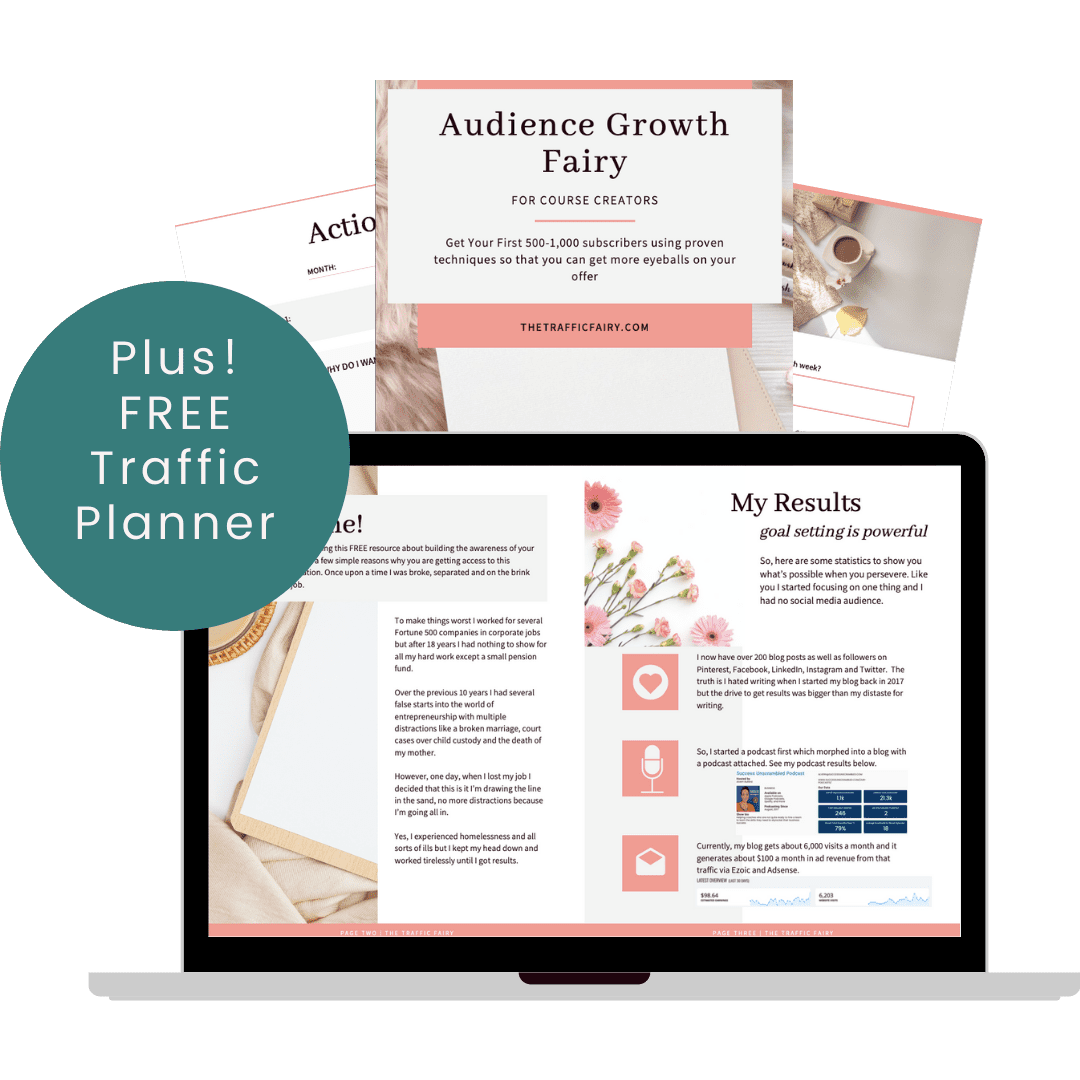Podcast: Play in new window | Download (Duration: 34:53 — 48.9MB) | Embed
Subscribe: Spotify | Amazon Music | Email | TuneIn | Deezer | RSS | More
Picture this: you’ve spent countless hours crafting the perfect Facebook ad for your business.
You’re convinced it will boost your sales, and can’t wait to see the results. But after a while, you notice something strange.
The same people keep seeing your ad over and over again in their Facebook feed.
They’re starting to get annoyed, and they are leaving negative feedback.
So, what’s going on? Well, my friend, it seems you’ve encountered the issue around Facebook ad frequency.
And if you’re not careful, it can hurt your campaign more than it helps. But what is Facebook ad frequency, and how much is too much?
Let’s dive deep into the world of Facebook ad frequency, and I’ll share with you some practical tips to make sure your ads stay fresh and relevant to your target audience.
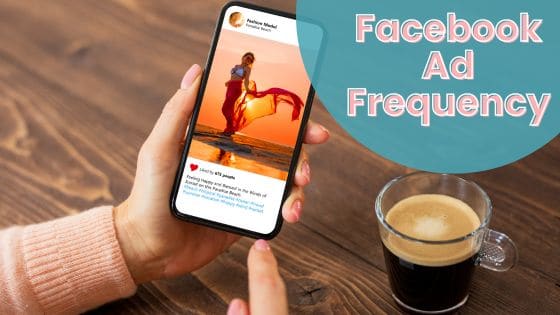
What Is Facebook Ad Frequency, And Why Does It Matter?
What exactly is Facebook ad frequency, and why should you care? Facebook ads frequency is the average number of times your ad has been shown to each person in your target audience.
It’s crucial because if you have a higher frequency, people might experience ad fatigue, leading to lower engagement, higher costs, and a potentially negative perception of your brand.
On the other hand, maintaining an optimal frequency can be beneficial for ad recall, particularly for a potential user or new user who is not yet familiar with your brand.
A well-managed frequency number helps ensure your target audience sees your ad enough times to remember your message and associate it with your brand.
By striking the right balance, you can optimize your campaigns for better ad recall without overwhelming your audience or causing high ad fatigue.
This can help you achieve higher engagement and conversions, making your advertising efforts more effective and efficient.
Managing Your Facebook Ad Frequency
Managing your Facebook ad frequency is about finding the right balance between reaching your Facebook user audience and not overexposing them to your ads.
It can be tricky to master, but here are some best practices to help you manage your ad frequency effectively:
- Monitor your ad frequency regularly to ensure it stays within an optimal range. The optimal frequency varies, but it should be around1 to 3 per ad set
- Adjust your ad targeting to reach a broader audience size if your frequency gets too high.
- Rotate your ad creatives to keep your ad quality fresh and engaging.
Another thing you can do is use the frequency cap feature to limit how often your ads are shown.
Understanding Facebook Ad Frequency Cap
Now that you know what Facebook ad frequency is and why the frequency metric is important, let’s talk about how you can control it using the Facebook ad frequency cap.
There are a couple of ways to set frequency depending on your needs and the features available.
First thing, if you are creating a campaign, Facebook Ads Manager only allows setting frequency caps for awareness campaigns.
You’ll be able to find that option when clicking the show more options under bid control.
The default frequency cap is 1 impression every 7 days, but you can edit it to whatever number you’d like.
Another option is to create automated rules. To do this, you’ll need to:
- Open the Facebook Ads Manager.
- Highlight the specific campaign where you’d like to implement the rule.
- Click the Rules drop-down button beside campaign tags in the main menu, select Create a New Rule, and click Custom Rule.
- Provide a name for the rule, and decide if it should apply to all active campaigns or only the selected one.
- Select the action for the rule to perform. You have three options: turn on the campaign, turn off the campaign, or send a notification only.
- Set up the desired frequency cap and time range for the rule under Conditions.
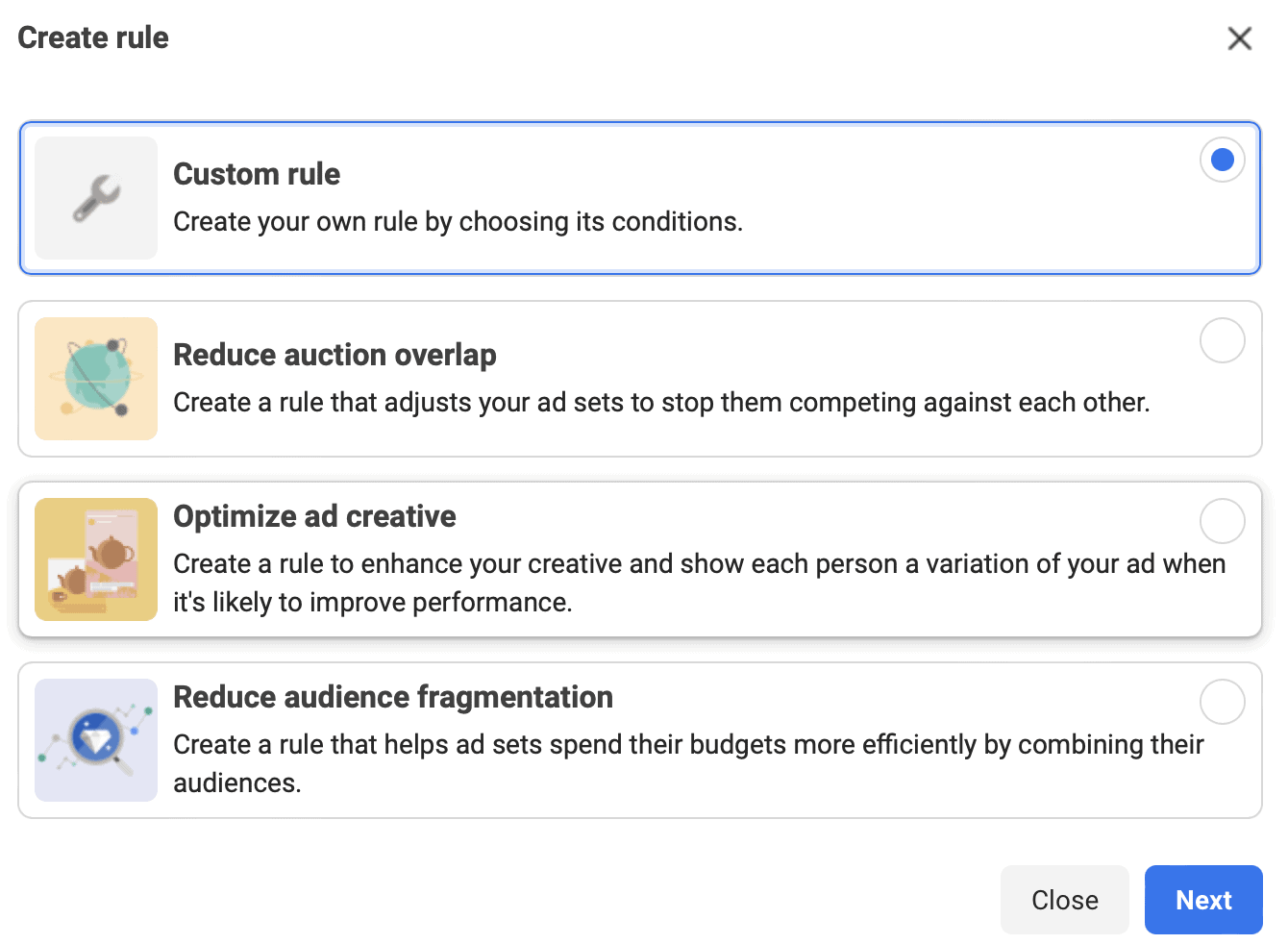
Unfortunately, this option does not enforce a strict frequency cap, as it is limited to, for example, only turning off the campaign if a specific cap is met.
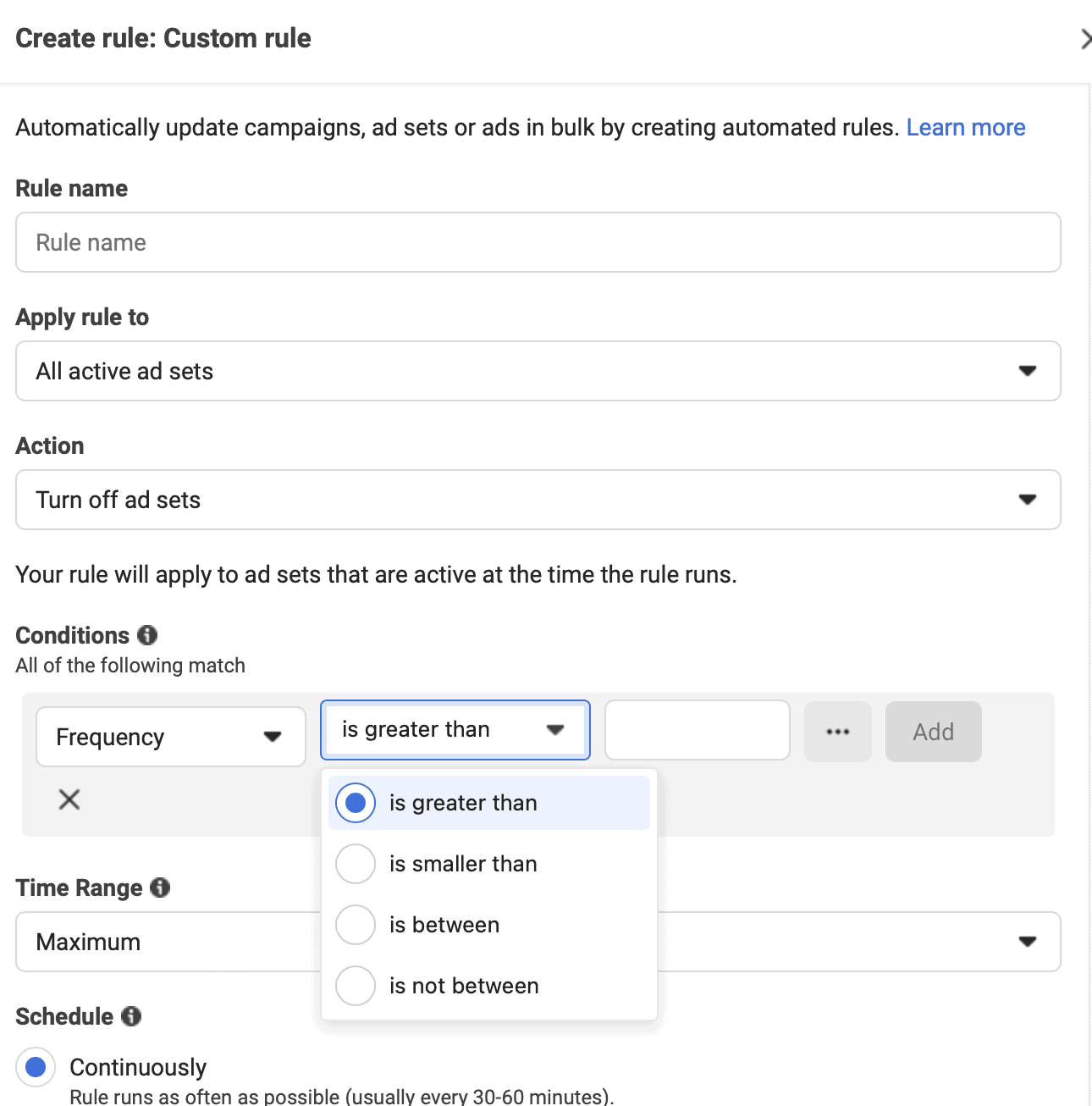
However, it can be useful.
Qualified Facebook advertisers may have access to reach and frequency buying functionality.
If you do, you’ll be able to play around with the ad frequency of your campaign in the Custom option under Reach and frequency balance.
You can then toggle the Increase average frequency option to turn it on.
And that’s it! Now you’ve set a frequency cap to help prevent ad fatigue and keep your ads relevant to your audience.
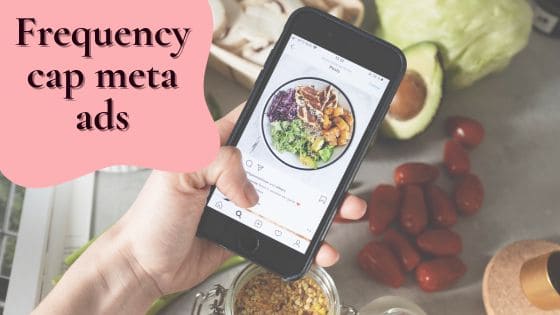
Facebook Ad Frequency: How Much Is Too Much?
Now that we’ve talked about setting caps, you’re probably asking yourself: how much Facebook ad frequency is too much?
And in reality, there is no one-size-fits-all answer. It really depends on various factors like your industry, audience, and campaign goals.
However, a general rule of thumb, recommended by Social Media Today, is between 1.8 and 4 views on average of an ad.
But that is an estimated metric, and it is essential to take into account other data points, such as ad impressions, the length of your campaign, and your advertising objectives.
Understanding the relationship between these factors will help you tailor your campaigns to reach the right audience without oversaturating them with content.
However, If your frequency exceeds that, it might be time to consider adjusting your strategy.
Finding The Optimal Facebook Ad Frequency
Remember that your ideal frequency may vary depending on your specific goals and the audience you’re targeting.
By analyzing the performance of your ads and monitoring key metrics, you can adjust your strategy to achieve the best results for your unique situation.
Ultimately, striking the right balance will help you maximize the effectiveness of your Facebook advertising efforts.
Finding the optimal Facebook ad frequency can be tricky. To help you along, here are some ideas to consider:
- Test different frequency caps and monitor their impact on your campaign performance.
- Analyze your ad relevance diagnostics (we’ll dive into this in the next section) to identify areas for improvement.
- Keep an eye on your ad’s performance metrics, such as click-through rate, cost per click, and return on ad spend, as they can indicate if your ad frequency is too high or too low.
In today’s digital world, the average internet user bumps into many ads daily.
That’s why it’s important to find the optimal ad frequency that ensures your particular ad stands out without overwhelming your unique users.
Remember that too many ad impressions can lead to negative comments and a less effective frequency for your campaign.
Alrighty, now that we’ve covered the importance of finding the right balance in ad frequency, the next step is to explore the Facebook Relevance Score.
What Is Facebook Relevance Score: When It Increases And When Plummets?
Facebook Relevance Score is a metric that measures the overall quality and relevance of your ads to your target audience.
A higher score means your ad is more relevant and engaging, which can lead to better results and lower costs.
Your relevance score can increase when your ad content resonates well with your audience, and it can plummet when your ad is poorly targeted or not engaging enough.
Relevance Score vs. Facebook Ad Frequency
Understanding the relationship between Relevance Score and Facebook ad frequency is essential.
A higher ad frequency can lead to ad fatigue, causing your relevance score to decrease.
On the other hand, a low frequency may not give you enough exposure to your target audience, which can also negatively impact your relevance score.
Finding the right balance between ad frequency and relevance is crucial for a successful campaign.
3 New Metrics For Facebook Relevance Score
In 2019, Facebook decided to shake things up a bit and replace the old relevance score with three new metrics to give you a clearer picture of your ad performance:
- Quality Ranking: This important metric compares your ad’s perceived quality with other ads competing for the same audience;
- Engagement Rate Ranking: Your ad’s expected engagement rate measured up against other ads, and lastly;
- Conversion Rate Ranking: Ranks your ad’s expected conversion rate against ads with the same optimization goal but still competing for that audience’s attention.
These diagnostics are like your personal ad performance detectives.
They help you spot your ad campaigns’ strengths and weaknesses. By checking out your ad’s quality, engagement, and conversion rankings, you can determine if tweaking your ad’s presentation, post-click experience, or targeting will make it even better.
In some cases, it could be a less obvious issue, like targeting the wrong audience, that has a major effect on your campaign.
💡But don’t get too hung up on sky-high relevance diagnostic rankings. High rankings are nice, but they don’t guarantee mind-blowing results.
Focus on improving low rankings and use these diagnostics to fix underperforming ads rather than aiming for perfection in every aspect.
With Facebook’s ad platform always changing, staying in the loop with the latest metrics and diagnostic tools is important.
This way, you can optimize your Facebook ad campaign like a pro and get the best possible results.
For instance, understanding different ways to analyze the number of impressions, link clicks, and average cost can help you fine-tune your frequency campaign and cater to larger audiences.
So, always be on the lookout for the best way to keep your Facebook ads in tip-top shape and ensure they resonate with your target audience.
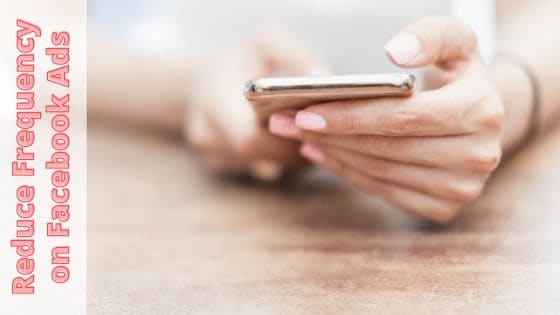
8 Tips To Lower Facebook Ad Frequency & Increase Relevance Score
Now that you know the importance of managing your Facebook ad frequency, let’s explore some tips to help you lower your ad frequency and increase your relevance score.
1. Set up frequency rules when you create your Facebook campaigns
When building your Facebook campaigns, don’t forget to establish frequency rules. This proactive approach helps you manage your ad frequency and ensures your audience, including new users and potential customers, doesn’t feel overwhelmed by your ads.
2. Know your target audience (cold vs. warm)
Understanding whether you’re targeting a cold or warm audience is crucial. Adjust your ad frequency depending on your audience’s familiarity with your brand. Remember, warmer audiences may tolerate higher frequencies.
3. Use the Facebook Pixel to create custom audiences
By implementing the Facebook Pixel, you can create custom audiences based on user interactions with your website. This allows you to target those who are more likely to be interested in your ads, improving your ad’s relevance
4. Create Lookalike audiences
A lookalike audience is a targeting tool that finds users similar to your existing customers, increasing the chances of your ads resonating with them. To create one, select a source audience, such as a custom audience or website visitors.
Facebook then generates a new audience based on shared traits, helping you maintain lower ad frequency while enhancing your ads’ relevance and effectiveness.
This strategy lets you reach a broader audience while ensuring your ads are shown to people likely interested in your offerings.
5. Exclude targeting converted and uninterested people
Avoid targeting people who have already converted or shown disinterest in your ads. This helps reduce ad fatigue, keeps your ad frequency in check, and allows you to focus on more interested users.
6. Select the best placement (news feed vs. side placement)
The right placement can lower your ad frequency while increasing engagement and relevance. You can choose automatic placements or experiment with different placements and ad types to find what works best for your campaign.
Be aware of banner blindness, when people naturally ignore website ads, like banners and pop-ups, because they’re focused on the main content instead.
7. Consider Campaign Budget Optimization
Embrace Campaign Budget Optimization to allocate your budget effectively across ad sets. This helps you maintain a healthy ad frequency while maximizing results, especially over the course of a couple of weeks or the entire campaign duration.
8. Consider A/B split testing with different ad variations
Try A/B split testing with various ad variations to discover what works best for your target audience.
By experimenting with different ads, you can maintain a lower frequency while keeping your ads fresh and engaging on the social platform.
With these tips in hand, lowering your Facebook ad frequency and increasing your relevance score should be a breeze.
Put these strategies into action and watch your ad campaigns become more effective, driving the results you desire.
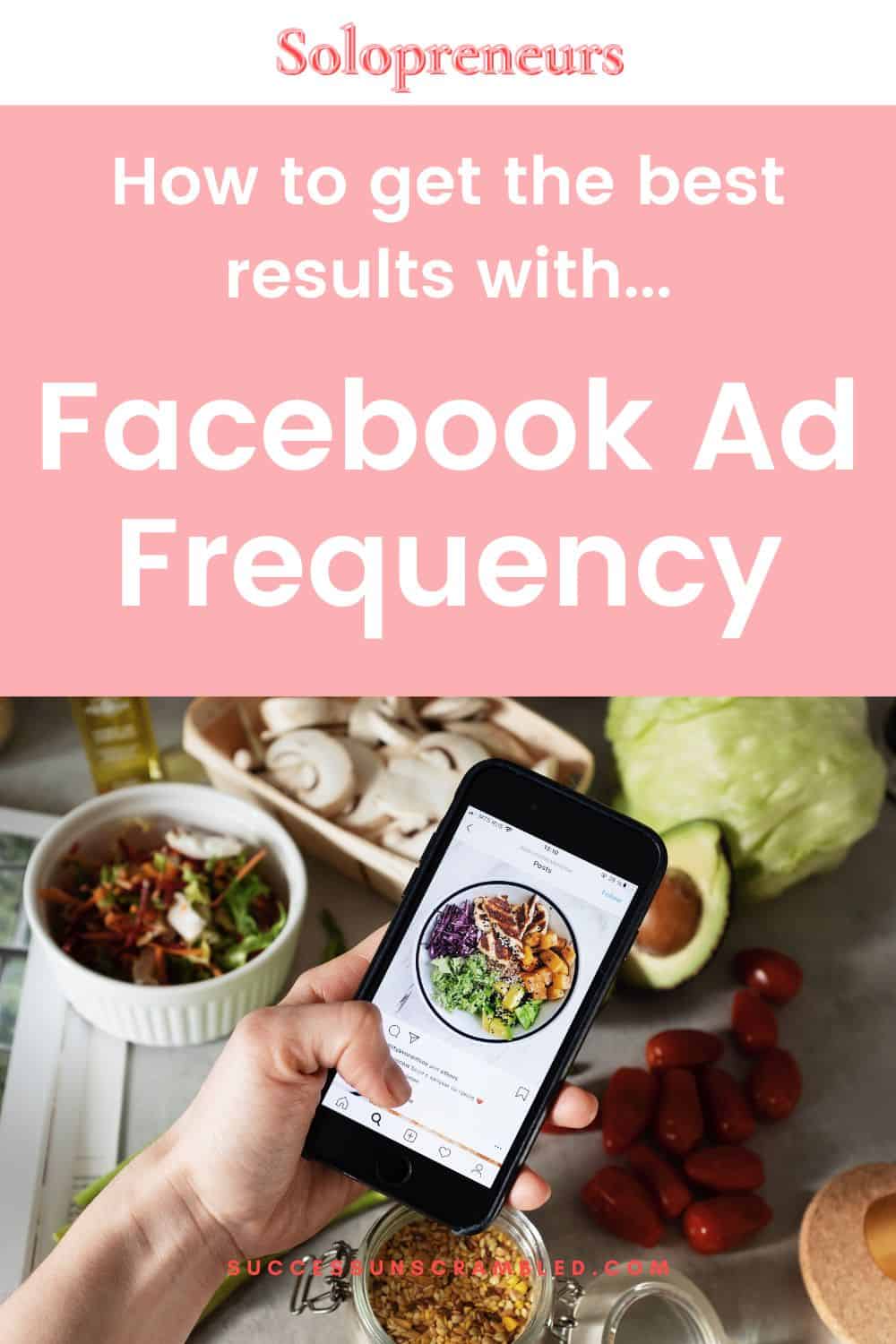
People Also Ask
I’ve gathered some frequently asked questions about Facebook ad frequency for you that I will quickly answer in this section.
What is the best frequency for Facebook ads?
The ideal frequency for Facebook ads varies depending on your campaign objectives and audience. Generally, a frequency of 1 to 3 is considered good.
When you keep the frequency in this range, you ensure that your ads aren’t overwhelming your audience yet still reaching them effectively. However, monitoring your ad performance and adjusting as needed is essential, as every campaign is unique.
Can you set ad frequency on Facebook?
Yes, you can set an ad frequency cap in Facebook Ads Manager for specific types of campaigns, like brand awareness.
What Facebook frequency is too high?
A high Facebook ad frequency varies depending on the campaign and the audience. However, when the frequency surpasses 6 or more, it may start to become counterproductive.
A high frequency could lead to ad fatigue, causing your audience to lose interest or even develop negative feelings toward your brand.
It’s crucial to keep an eye on your ad frequency and make adjustments to maintain its effectiveness.
Key Takeaways On Facebook Ad Frequency
Understanding and managing Facebook ad frequency is essential for your advertising campaigns’ success.
A good frequency range is typically between 1 and 3, although it can vary depending on your specific campaign and audience.
Setting an ad frequency cap in Facebook Ads Manager for certain campaigns helps control ad exposure.
Additionally, Facebook’s ad relevance diagnostics, such as Quality Ranking, Engagement Rate Ranking, and Conversion Rate Ranking, can assist in refining your ad performance.
To lower your Facebook ad frequency and increase your ad relevance score, follow tips like setting up frequency rules, knowing your target audience, using the Facebook Pixel, creating lookalike audiences, and more.
Optimizing ad frequency and relevance will enhance your campaign’s performance by effectively reaching your target audience.
So, dive in and review your current Facebook ad campaigns or start with these valuable tips to create successful Facebook ads.
Remember, that you can book some time in my calendar if you need help with Facebook ads.
I’m here to help you navigate the ever-changing world of Facebook advertising. Best of luck!

